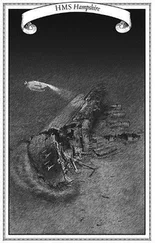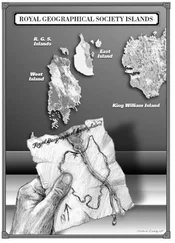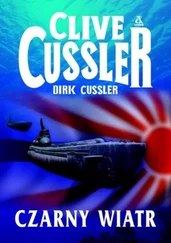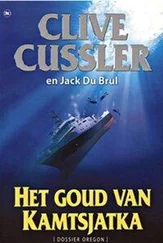“We’re ready,” Eric said when Juan answered. He looked down the length of the ship where a stevedore was waiting by the aft line. He threw the man a signal and he heaved the heavy rope off the bollard and let it slide into the water. A capstan immediately started reeling it into the ship. Juan repeated the motion to the longshoremen waiting near the bows. Before he could tell Stone they were free he saw water boil between theOregon and the dock as the athwartship thrusters came online. When they cleared the stern of the Russian freighter Eric powered up the magnetohydrodynamics, keeping the speed down so her forward momentum wouldn’t cause the hull to squat, or settle deeper in the water. It was only when they were a mile from the shallow harbor that he started pouring on the power.
Juan waited on the flying bridge for another couple of moments, knowing it would be his last seconds of peace until the mission was over. The slide of dread he’d felt when Linda told him the attack had begun was giving way to a new sensation, one he knew too well. It was the first feeling of adrenaline being pumped into his body. It was almost as though he could detect each time his adrenal glands secreted a dose into his bloodstream.
His stump was still sore, but he no longer felt it. His back still ached, but it no longer bothered him. He no longer missed the sleep he hadn’t gotten. His mind became focused on the task at hand and his body responded, willing to do whatever he asked of it.
He turned to Linda. “Ready?”
“Aye.”
On the elevator down to the op center he asked her about Susan Donleavy.
“I had planned on talking to her today, but, well…”
“No problem,” Juan said. The elevator doors whisked open. “Hali? What’s the latest?”
“Petromax is trying to reach the provisional authorities to tell them about the attack, but so far the government hasn’t responded. Nothing’s happening in the workers’ compound. The assault is focused solely on the terminal and the offshore rigs. It seems two platforms are under terrorist control while two more are trying to defend themselves using firefighting water cannons. One of the rig’s tool pushers radioed that he’s lost a couple of men to small arms fire and that he doesn’t think they can hold out much longer.”
“Eric, what’s our ETA?”
“An hour.”
“Murph, weapons status?”
Mark Murphy craned around to look at Juan. “We’re loaded for bear, Chairman.”
“Okay, good. Oh, and guys, nice job finding the radio tagged guns. God knows how much worse things would get if we’d been floundering around the Congo River.”
Cabrillo turned to head for his cabin and noted Chuck “Tiny” Gunderson seated at a work station at the back of the room. In front of him was a computer monitor. On-screen was an image of George Adams cleaning the lens of the camera mounted in the nose of the aerial drone.
“Looks good,” Tiny said into his mike. He moved his hands over the computer keyboard. “Step back; I’m firing the engine now.”
The camera began to vibrate as the plane’s little motor caught.
“Okay, green across the board. Up, up, and away.”
The image began to move as the plane sped down a launch ramp, past theOregon ’s forward derricks and then over the railing. Tiny brought its nose down with a joystick, exchanging altitude for speed and then eased back on the stick to send it into the sky.
Juan went to his cabin to get ready. Before changing into his newly refurbished combat leg and dark fatigues, he turned on his computer to get the live feed from the UAV’s cameras. He kept one eye on the monitor as he readied his arsenal of weapons.
The four-foot-long airplane was at about a thousand feet and flying over the large peninsula that the Oregon had to go around in order to reach the Petromax oil terminal. A more powerful transmitter aboard had allowed them to expand the drone’s range from fifteen miles up to forty so it no longer had to stay so close to the ship. It flashed over farmland and jungle and finally the area of mangrove swamps that effectively cut off the port from the rest of Cabinda save for a single road.
Tiny dropped the plane down so it was five hundred feet off the haul road. A few miles from the entrance to the terminal a line of trucks sat idle. Juan guessed why, and in a moment the camera revealed the road had been blocked by felled trees. Because the ground just off the road was so soft the big tanker trucks couldn’t turn around. It would take giant earthmovers or a week of chain-sawing to remove the obstacle. If the Angolan government did send troops they would have to abandon any fighting vehicles well short of their target.
Having studied satellite pictures of the remote port, Cabrillo had anticipated this move because it was exactly what he would have done had he been in charge of the assault.
He watched as Tiny made the model plane gain altitude again as it neared the terminal. From a thousand feet everything looked normal at first. The two-hundred-acre facility sprawled along the coast, with a massive tank farm at its southernmost point and a separate compound for workers’ dormitories and recreational facilities to the north. Between them were miles of pipes in a hundred different sizes twisting and bending together in a maze only its designers could understand. There were warehouses as large as anything Cabrillo had ever seen, as well as a harbor for the tenders and workboats that took personnel to and from the offshore rigs. Shooting off from the facility was a mile-long causeway that led to the loading berths for the supertankers that took the crude to markets all over the globe. A thousand-foot tanker was tied to one, her tanks empty if Juan were to judge by the amount of red antifouling paint he could see above her waterline.
He spotted a large building constructed on an specially hardened pad near one of the terminal’s tallest vent towers. Juan knew from the research his people had done there were three General Electric jet engines inside the structure that provided electricity to the whole instillation. High-tension power lines ran from it to every corner of the port.
Three miles off the coast sat a string of dozens of oil rigs running northward like a man-made archipelago, each connected back to the port by undersea pipelines. Though not as large as rigs Juan had seen in the North Sea or the Gulf of Mexico, each was at least two hundred feet tall, their superstructures held above the waves on massive support piers.
It all appeared normal except when he started looking more carefully. Some of the flames he saw weren’t from natural gas being intentionally burned off. Several trucks had been set ablaze, and more than one building was wreathed in sooty smoke. The tiny stick figures lying randomly around the yard were the corpses of workers and members of the security force who’d been gunned down by Makambo’s soldiers. What Juan first took to be shadows around them were actually pools of blood.
Tiny Gunderson then swept the drone over the shoreline and out along the causeway. The pipes that fed the floating dock looked as big around as railcars. Juan cursed when he saw the men swarming around the loading gantries. They had removed them from the tanker and now crude oil was being dumped into the sea in four thick streams. The spill already surrounded the pier and was spreading by the second.
One of the men must have seen the drone because suddenly several of them looked up. Some pointed with their arms while others opened fire at the little plane.
The chance of hitting the UAV was remote, but Tiny juked the aircraft and headed for the nearest offshore platform. From a half mile away Juan could see it was ringed with oil. The crude weighed enough to crush the waves that tried to pass under it. All the ocean could do was to make the slick undulate like a lazy ripple of black silk. The prevailing current was already stretching the spill northward even as the slick grew in size from the oil gushing off the rig in a black rain. When the drone approached the second platform under the terrorists’ control, Cabrillo saw that this slick was even larger than the first.
Читать дальше












